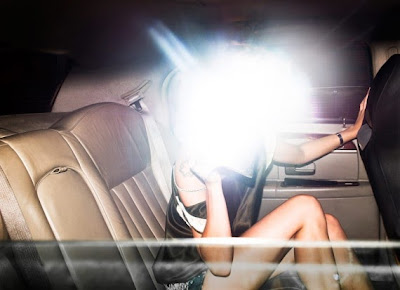 The line between fashion and technology is getting blurrier
all the time, and it’s no secret that Google Glass and the iWatch are going to
shift the way we think about accessories forever. But secrets that can be kept
are still a source of inspiration, for a small handful of designers at least.
As our right to privacy shrinks, counter-surveillance clothing is causing a
stir and London-based artist Adam Harvey is leading the way.
The line between fashion and technology is getting blurrier
all the time, and it’s no secret that Google Glass and the iWatch are going to
shift the way we think about accessories forever. But secrets that can be kept
are still a source of inspiration, for a small handful of designers at least.
As our right to privacy shrinks, counter-surveillance clothing is causing a
stir and London-based artist Adam Harvey is leading the way.
Alongside his day job as a design professor, Harvey’s work
on ‘Stealth Wear’ thwarts technology’s attempts to record our every move. His
OFF Pocket phone case, which launches online this month, blocks out all
incoming and outgoing signals. For the modern day renegade, this means it will
stop anyone from tracking your movements via your mobile phone.
But Harvey’s conceptual designs are even more interesting;
he’s worked with his OFF Pocket collaborator Johanna Bloomfield on an ‘Anti-Drone’
collection of clothing - mostly cloaks and hoodies - that are cut in a special fabric.
The lightweight, metallic material reflects heat, making it more difficult for
drones (which use thermal imaging) to track the wearer.
He’s also developing a line of anti-paparazzi accessories,
with a CamoflashTM Clutch that doubles up as a shield from flash photography. Harvey
hasn’t released a huge amount of information about the patent-pending prototype
yet, but it looks like holding it up would reflect the light from the flash,
obscuring your face and protecting your privacy from unwanted attention.
And Adam Harvey’s not alone. While he’s dabbled in using
extreme hair styling and make-up to sidestep facial-recognition technology,
Japan’s National Institute of Informatics has taken the idea a step further.
Their ‘privacy visor’ uses lights, similar to infrared, that the human eye can’t
see but which will block the wearer’s features from face-detection devices. Much,
much less stylish than Adam Harvey’s designs, or even the Google Glass
prototypes, it’s more of a practical accessory than a fashion statement – but the
idea, once perfected, could one day be transplanted into a trend-aware pair of
sunglasses.
Most of these designs are still in the concept stage,
limited to galleries and design studios. But even if they’re never widely
produced, their existence shows that the fear of surveillance is strong enough
to drive intense creativity. Could Stealth Wear be the start of a pro-privacy
movement that brings fashion and technology even closer together?
Images from http://ahprojects.com/














No comments:
Post a Comment